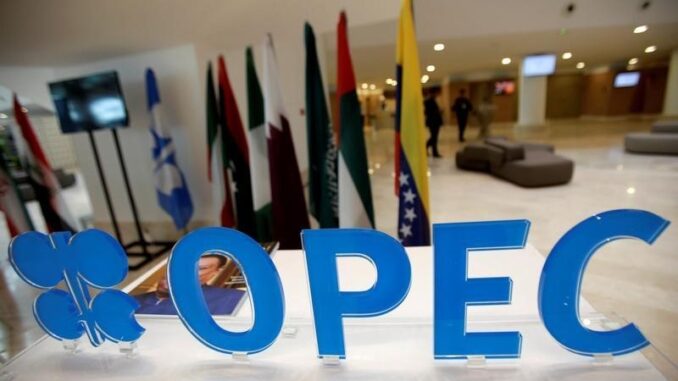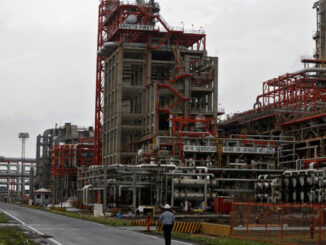
OPEC and its allies appear set to announce production cuts for November at their meeting Oct. 5, in defiance of White House pressure to avoid a potential spike in oil prices, though the size and scope of the curbs remain the subject of much debate.
Sources involved in the talks have said cuts of up to 2 million b/d could be considered, with Saudi Arabia and Russia particularly keen to send a message to the market, though some countries are arguing for much less, around the scale of 750,000 b/d.
A nine-country Joint Ministerial Monitoring Committee co-chaired by Saudi Arabia and Russia is scheduled to meet in Vienna at around 2:00 pm local time (1200 GMT), with the full OPEC+ meeting to start after it concludes.
This is the first face-to-face gathering of OPEC+ ministers since March 2020. Ministers have mostly remained tightlipped while in the Austrian capital.
“It’s an important meeting,” UAE energy minister Suhail al-Mazrouei told reporters Oct. 5, declining to elaborate on what proposals are being considered. “We trust this organization and hopefully we will take the right decision.”
Kuwaiti oil minister Mohamed al-Fares said that “everybody knows what the market is doing right now,” while Nigerian petroleum minister Timipre Sylva would only say: “I’m happy to be back in Vienna.”
Crude oil futures have risen in anticipation of the OPEC+ decision, with the ICE December Brent contract at $91.94/b as of 0740 GMT, a rise of almost 8% since the end of September.
Platts assessed the Dated Brent physical crude price at $93.73/b on Oct. 4, up 10.8% from $84.63/b on Sept. 26, when rumors of an OPEC+ cut began swirling. But the benchmark is still down from a June 14 peak of $132.06/b, amid market concerns over a global recession.
US pressure
Any cuts would come as the US’s 1 million b/d releases from its Strategic Petroleum Reserve are scheduled to end in October, potentially exacerbating a tight market if global oil demand holds up.
As well, an EU ban on seaborne imports of Russian crude is scheduled to go into effect Dec. 5.
US officials have warned key OPEC countries not to create conditions that would squeeze oil prices, according to a report from CNN.
OPEC’s own analysis indicates global oil demand will climb from 99.67 million b/d in the third quarter to 102.42 million b/d in Q4, despite warning signs of a global recession.
White House press secretary Karine Jean-Pierre offered no comment on the potential OPEC+ cuts at an Oct. 4 press conference, instead stating: “We will continue to take steps to protect American consumers and have taken every step to ensure the market is sufficiently supplied.”
Depending on how the cuts are divvied up, it is likely Saudi Arabia, the UAE and Kuwait would have to bear the biggest burdens of removing actual physical barrels from the market, as the biggest members producing at or near their quotas.
Most other members, including Russia, are severely underproducing their targets, with collective OPEC+ output some 3.6 million b/d below quotas for August.
Keeping some in reserve
Saudi officials have indicated that they would prefer to pull back some output to recover some of the kingdom’s spare capacity and maintain its role as the market’s primary swing producer, in case of further supply disruptions.
Current Saudi output of near 11 million b/d is above what JP Morgan analysts say is a more comfortable level of around 10.6 million to 10.7 million b/d.
“Lowering production to be close to the limits of sustainable Saudi capacity for more than a quarter would also allow the kingdom to keep some production capacity in reserve,” the analysts said in a note.
Russia’s oil output, meanwhile, has already been significantly impacted by Western sanctions introduced in response to the invasion of Ukraine, launched Feb. 24.
The biggest hit to date came in April when output dropped to 9.14 million b/d, according to the Platts OPEC+ survey by S&P Global Commodity insights published in May. It has since recovered and was assessed at 9.77 million b/d in August, but remains below the February figure of 10.11 million b/d.
Russian output is also well below its quotas under the OPEC+ agreement, which is 11.030 million b/d for September and 11.004 million b/d for October.
S&P Global forecasts Russian losses to peak at 1.5 million b/d in Q1 2023.



